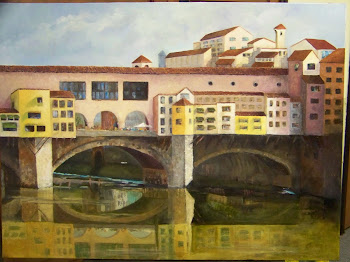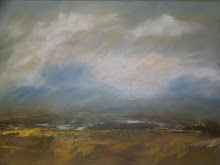A little Mardi Gras History Chiacchere
Chiacchere are one of the classic Carnival pastries that people enjoy before the privations of Lent. As is often the case when dishes are popular, there are many versions of Chiacchere; this is from the Marche.
5 4/5 cups all purpose flour
4 ounces live baker's yeast (the cakes of yeast you will find in the dairy section of the supermarket)
4 eggs
1/2 cup butter
The grated zest (yellow part only) of three organically grown lemons
1 1/2 cups sugar
1 cup warm milk
Oil for frying
Dissolve the yeast in the milk. Make a mound of the flour on your work surface; scoop a well in the middle of it and crack the eggs into the hole, then crumble the butter in and finally mix in the milk. Work the mixture until it is a smooth dough and set it, covered, in a warm place to rise. When the dough has about doubled in volume divide it into three parts. Roll the first out into a thin rectangular sheet and sprinkle a third each of the sugar and the lemon zest over it. Roll the sheet half way from each side to obtained two joined rolls (they'll resemble a heart in cross section). Cut the roll into half-inch (1 cm) slices and fry them in hot oil until golden brown; when you have finished with the first portion of dough do the second, and so on. (recipe and photo from About.com/Italian Cooking)
"Laissez Les Bons Temps Rouler!
"Let the good Times Roll!"
This is the last big weekend of Mardi Gras...are you having a party? Mardi Gras is a major celebration in Europe, particularly in Italy and Germany, and of course, here in the United States down south in New Orleans. The history of Mardi Gras is difficult to pin down, depending who's written history you are reading. Here is what I have come up with. In the 2nd century, Ancient Romans would observe what they called the Lupercalia , a circus -like festival, very similar to present day Mardi Gras. The festivities were to honor the Roman deity, Lupercus. When Christianity arrived in Rome, the dignitaries of the early Church decided to continue a festival rather than anger the people by abolishing the tradition. The Carnival became a time of abandon and merriment which preceded the Lenten period, a 40 day period starting on Ash Wednesday and ending at Easter. They would eat, drink, party until they dropped! Masks and costumes were worn, the majority honoring Bacchus and Venus.
From Rome, the celebration spread to other European countries, each developing their own traditions. In Germany, Fasching began, I've heard, to celebrate the wedding of crazy Ludvig.
Their carnival starts on Twelfth Night and continues until Shrove Tuesday.
The English have a far more reserved celebration, due to the fact their original Festival incorporated fertility motifs and ball games which, more often than not, turned into riots! They would play the games between opposing villages, followed by feasts of pancakes and drinking alcohol. Today Shrove Tuesday is still a tradition with pancake races. The most famous of these started in Olney, Buckinghamshire in 1445. The word Shrove is derived from the Old English word "shrive", which means to "confess all sins." Whoops!
So, the history of Mardi Gras in America began when French Explorer, Sieur d"Iberville, came here in 1699. The festival had been celebrated in Paris since the Middle Ages, and he wanted it to continue here. He sailed into what is now the harbor of New Orleans on the very day the celebration was taking place in Paris, so he named the landing spot Point du Mardi Gras. From
that point until 1833, Mardi Gras history is rather sketchy. Then, in 1833, Bernard Xavier de Marigny de Mandeville (wouldn't you hate to have to learn how to spell that name in kindergarten?) a wealthy plantation owner organized and raised funds to have a proper Mardi Gras. Two years later, the first parade was given with 1 float. Today the Mardi Gras Parade is a huge event with hundreds of entries.
The colors of Mardi Gras are purple (symbolic of justice), green (symbolic of faith), and gold (symbolic of power).
The 2009 date for carnevale is February 24 but celebrations in Venice and many parts of Italy.
If I were going to go somewhere to celebrate the festival, Venice is where I would go. Although carnival is actually one date, in Venice and some other places in Italy the carnival celebrations and parties may begin a couple weeks before.
Masks, maschere, are an important part of the carnevale festival and Venice is the best city for traditional carnival masks. Carnival masks are sold year round and can be found in many shops in Venice, ranging from cheap masks to elaborate and expensive masks. Walking through the streets of Venice, it's a pleasure to view the variety of masks on display in shop windows. People also wear elaborate costumes for the festival and there are costume or masquerade balls, both private and public.
I could enjoy a week in Venice, I could wear a mask, I could eat and drink, sing and dance........
The 2009 Westminster Kennel Club Dog Show
 Stump Wins!
Stump Wins!
A Sussex Spaniel wins the 133rd Westminster Kennel Club Dog Show at Madison Square Garden in New York City.
The wonderful golden-liver colored Sussex Spaniel, named for its place of origin in England, is the longest and lowest of the Spaniel breeds. Its striking characteristics include its massive head and bone, long body, strong, short legs, a rolling gait and a happy tail. These traits made the Sussex ideal for its original purpose as a gentleman's flushing spaniel operating in heavy undergrowth. Among the first nine breeds recognized by the AKC, today the Sussex is one of the most rare, with only about 600 in the USA.
Stump is the oldest dog to ever win the Westminster prized trophy for "Best of Show". At 10 years old, Stump is returning to the Dog Show circuit after a 5 year retirement. In 2002, Stump came very close to death when his whole body stopped functioning. But with outstanding medical treatment at a Texas university vet hospital, Stump is back and a hero!
He will spend the next year making personal appearances. Uno, the amazing Beagle who won the title last year, has just completed his year of touring. Stump starts his journey today.
If you missed the show on television, you can pull up clips and find the results at
http://www.westminsterkennelclub.org/2009/results. You will fall in love!

 Stump Wins!
Stump Wins!





No comments:
Post a Comment